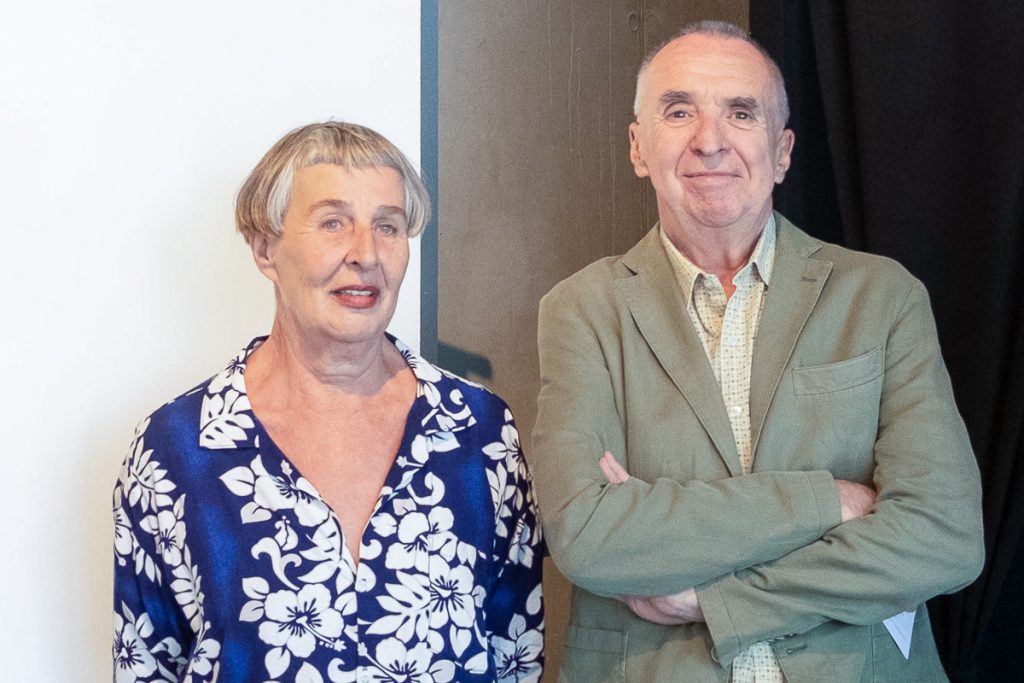Hanna Schimek
In 2015, Gustav and I were invited by the Belgian dramaturge Guy Colls to participate in the Choreographic Laboratory at the Dampfzentrale in Bern (CH). The series of events was dedicated to rhythm as a central form in film and other artistic formats.
We chose “Walking Together in Creativity” as the title of our lecture performance. It seems to me that Gustav’s notes for this event can be seen as programmatic for his work in general, and in particular for the films that were being presented at the Austrian Film Museum as part of the series Gustav Deutsch. to be continued in November 2024.

Rhythmically Movements and Repetition – Basic Elements of Life
Rhythmically repeated movements of our parents in the act of lovemaking were the basic requirement for the genesis of our lives. Since our first breath rhythmically repeated movements of the heart and lungs regulate our blood circulation and respiration – day by day, night by night. Regularly repeated phases of being awake and asleep keep us alive. By rhythmically repeated movements of our legs, we are able to move, repeated body movements characterize dance and sports. The repetition of everyday rituals sets the daily routine; the repetition of daily routines determines our life rhythm.
When we walk, our hearts are rhythmically pumping blood in our arteries, veins and organs, and our lungs are rhythmically pumping oxygen in our cells and into our brain. Here endorphins are produced, which themselves produce sexual hormones and are responsible for the creation of euphoria.
On Rhythm in Film – Production and Reception
The filmmaker works alone at home, in the atelier, and develops his or her own phases and rhythms of the workflow. The film lab is the only collaborator.
When it comes to film production on a bigger scale, it becomes a teamwork: specialists from different fields, camera, light, costume, set design, actors, work together in different phases of the production, developing their own rhythm, but always within the strictly organized structure of the production management, and the director.
The final film, whether it’s a one-man, or a teamwork production, is – like a painting – a rhythmical composition itself, which can be drawn as a flow line,
like notations of music (John Cage), or to the waves of our brain in different phases of action and consciousness.
Cinema goers sit down in a fixed row of seats, look in one direction, and don’t move till the end of the film. Physically completely static, they are emotionally stimulated by the events on the screen, by the story and the performance of the actors. Their rhythm of perception is the rhythm of the film.

(Photo: AFM © Eszter Kondor)
As part of the “Digital Cultural Heritage” funding program 63 short films by Gustav Deutsch and Hanna Schimek were digitized in 2K by the Austrian Film Museum. Funded by the Federal Ministry for Arts, Culture, the Civil Service and Sport (BMKOES).